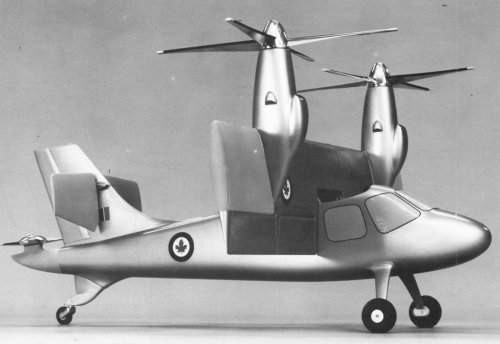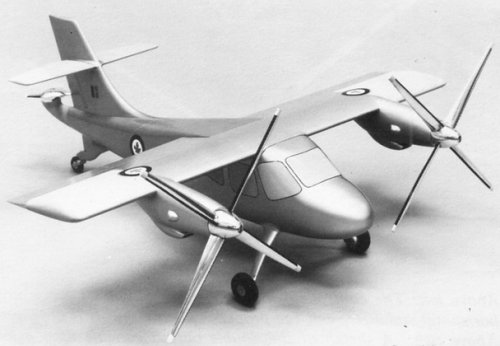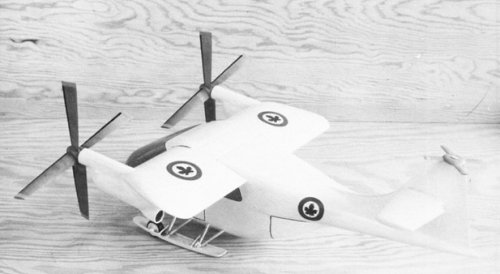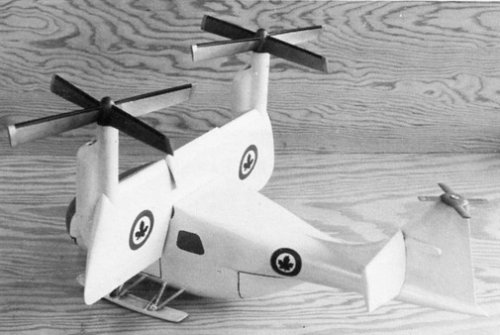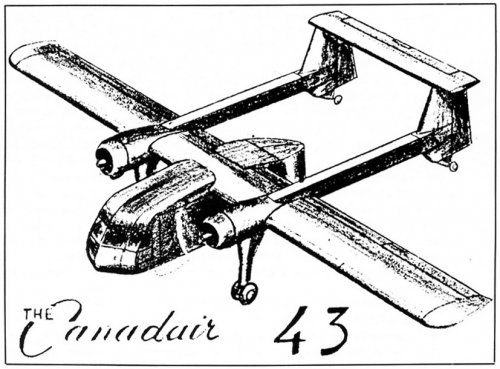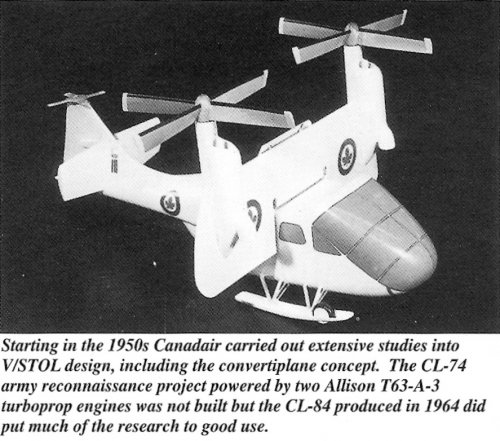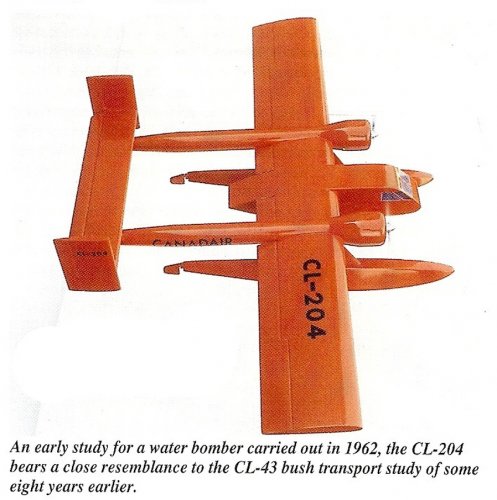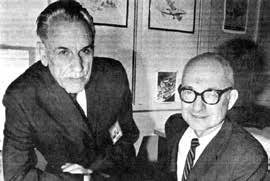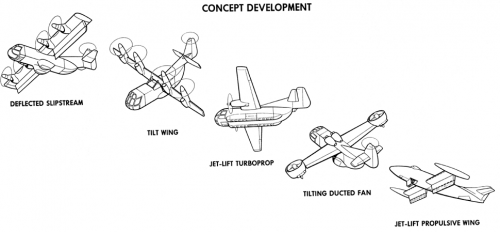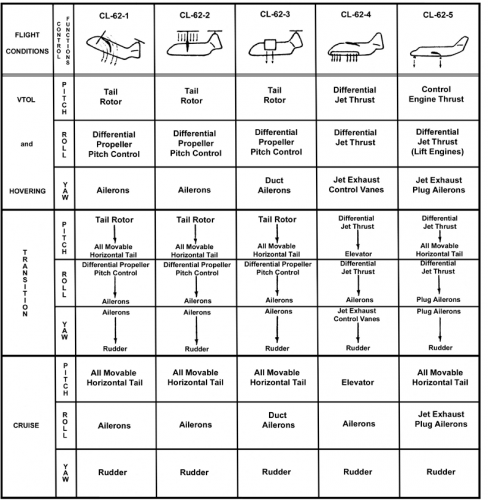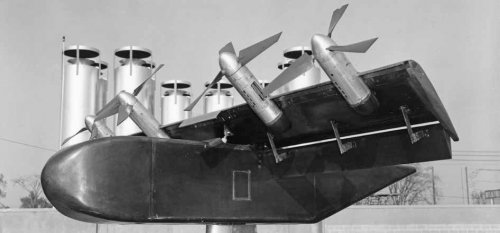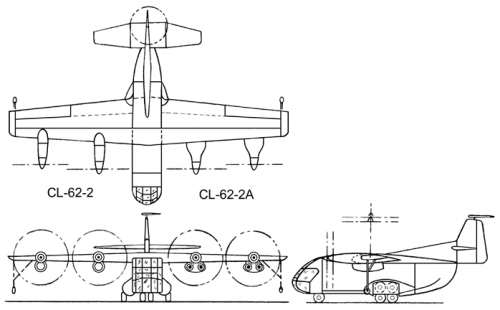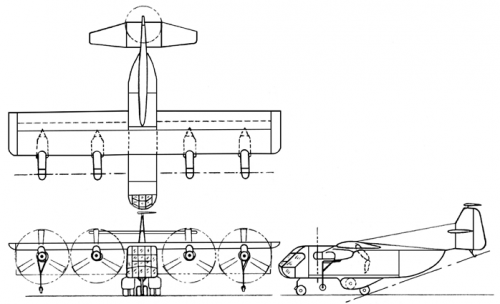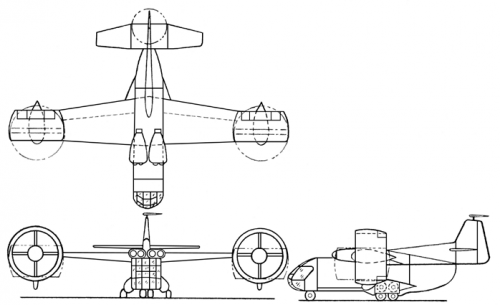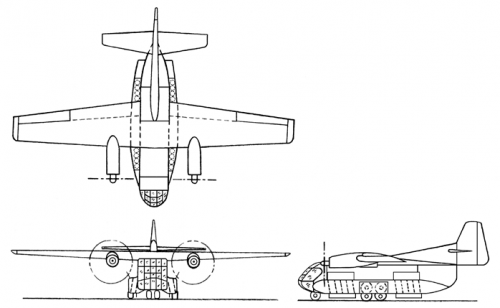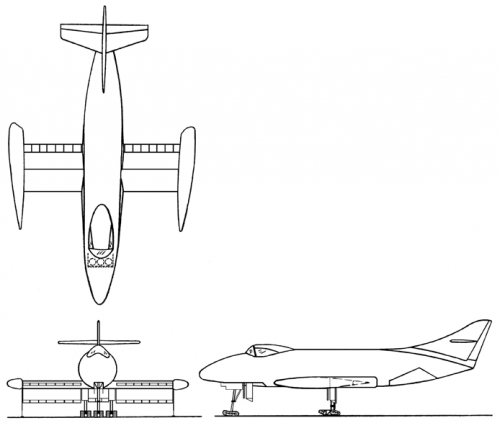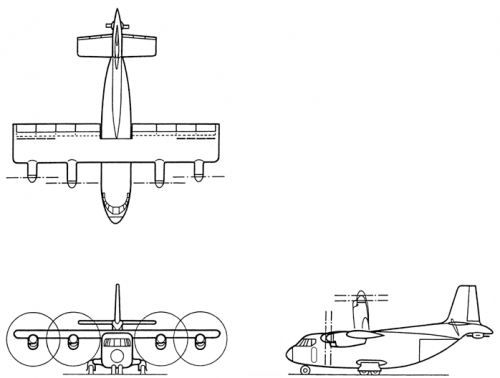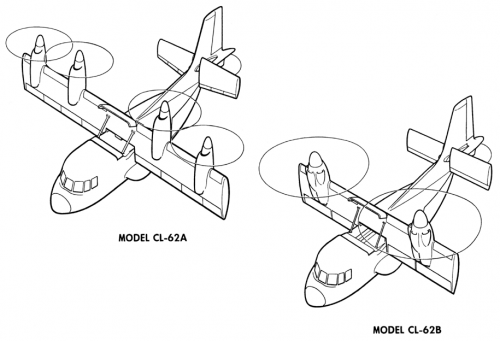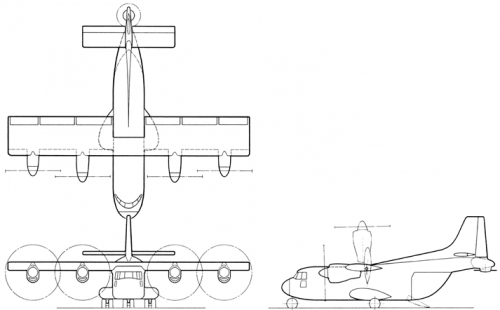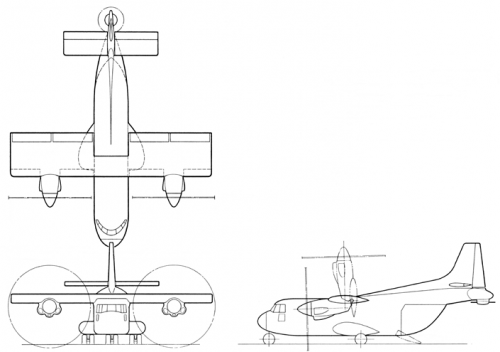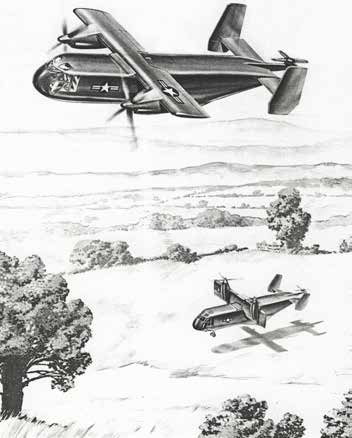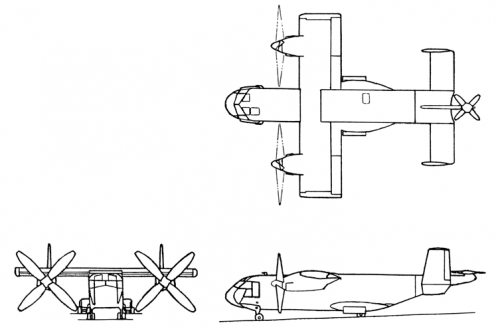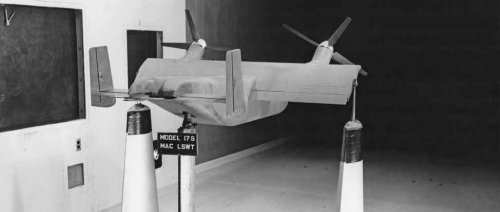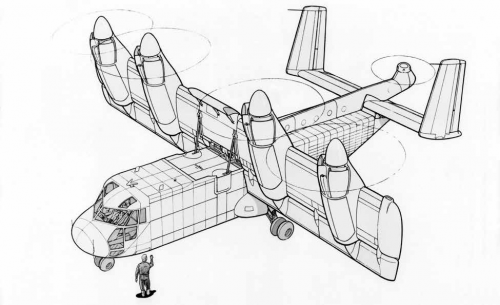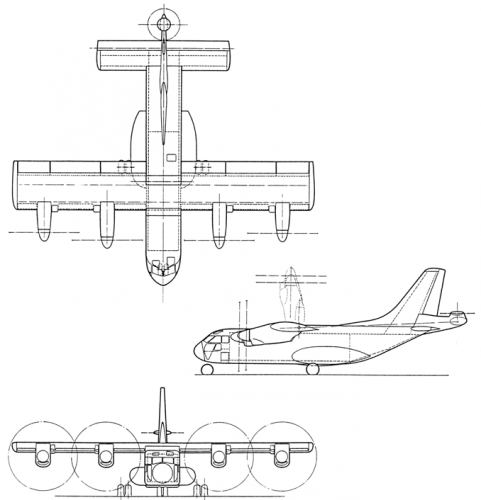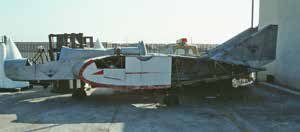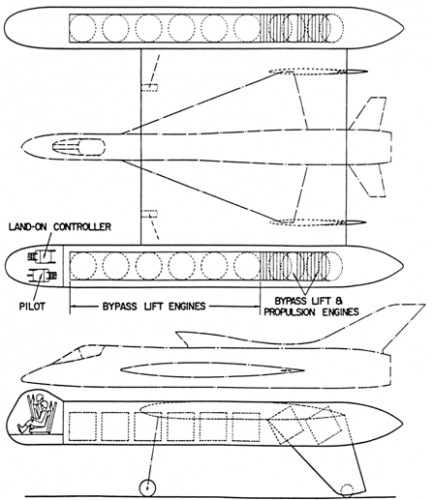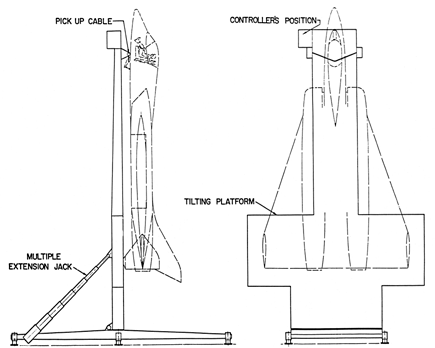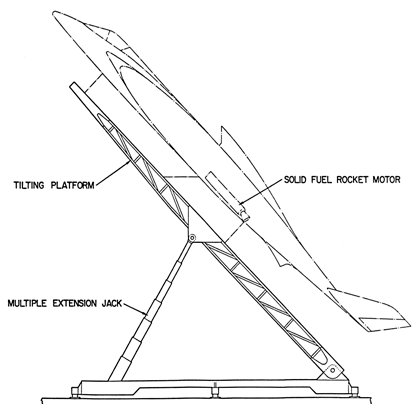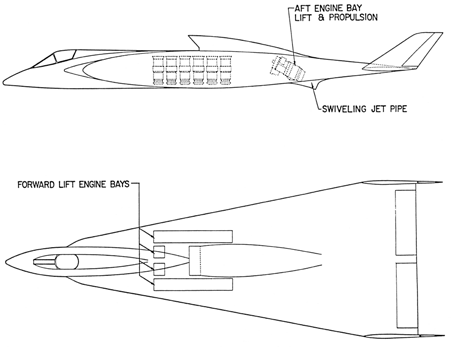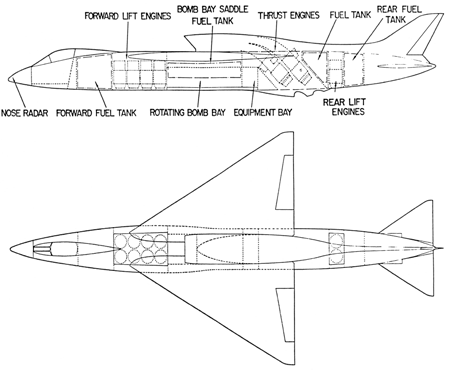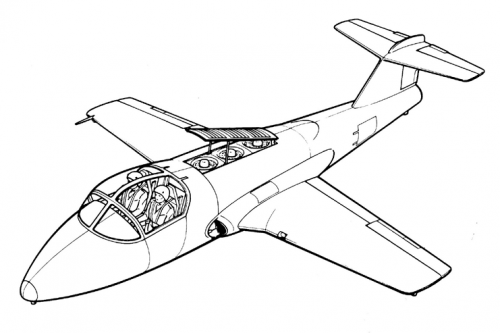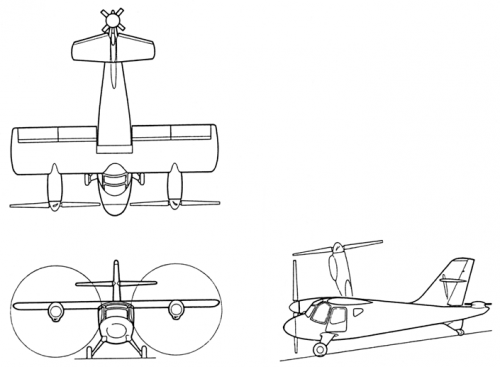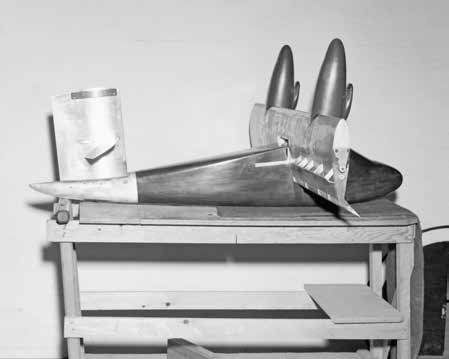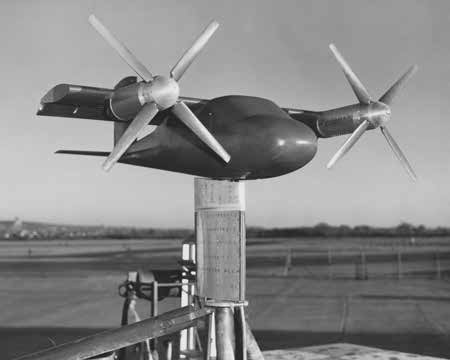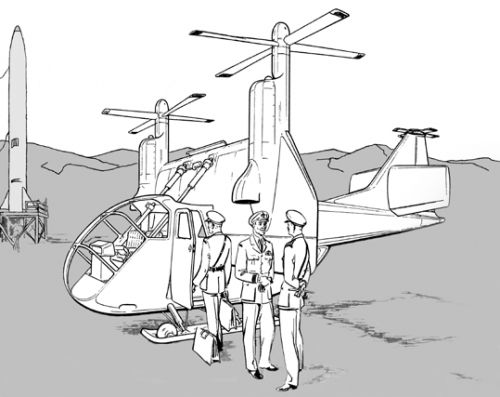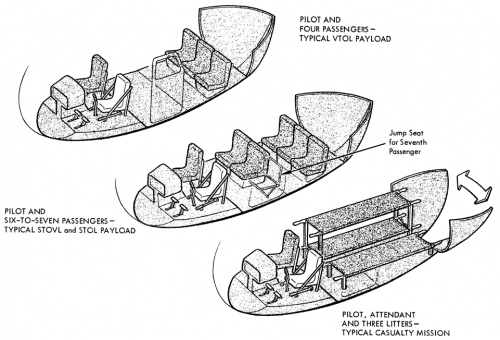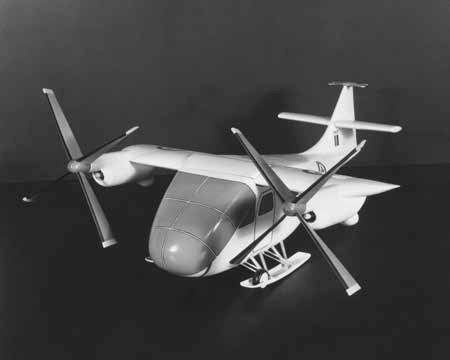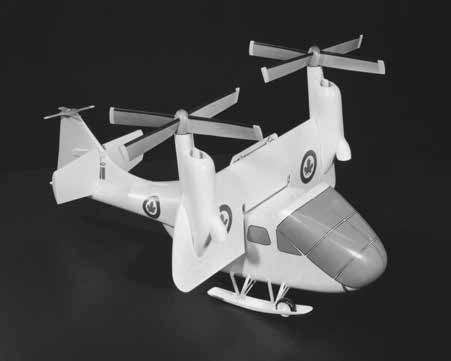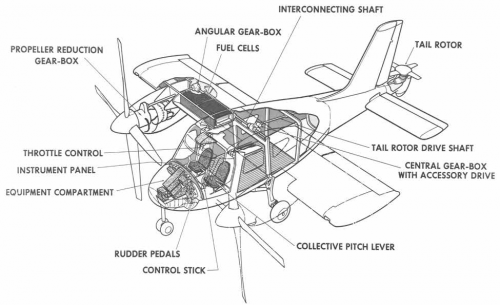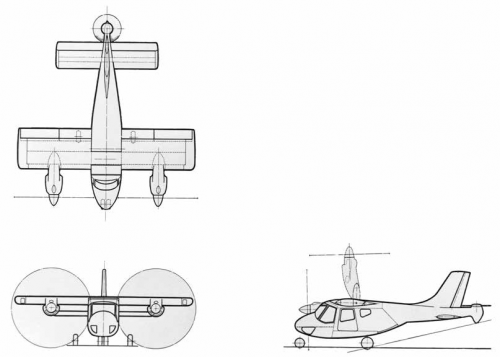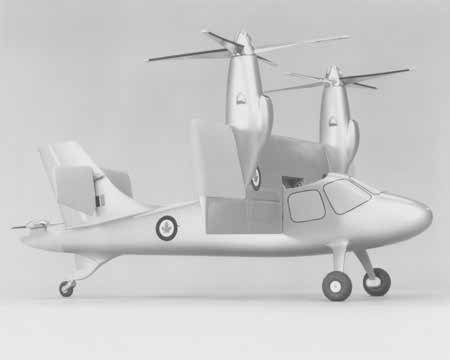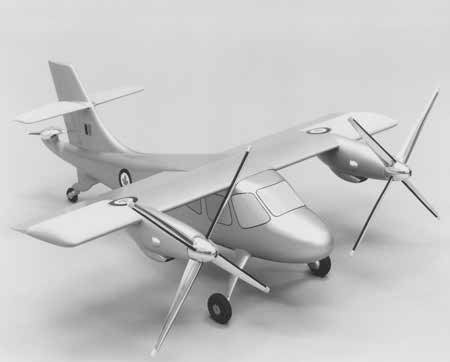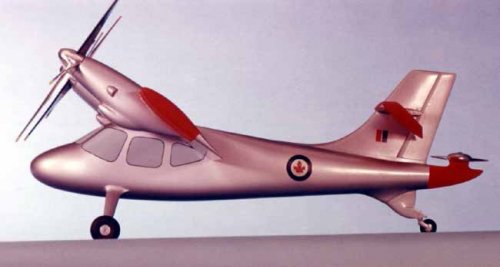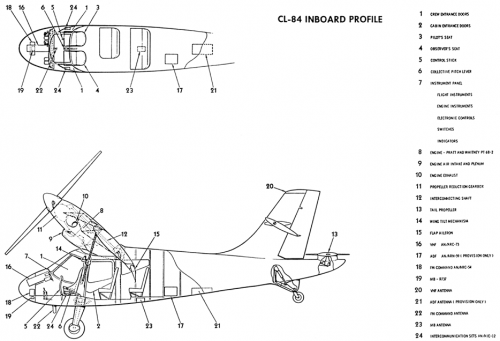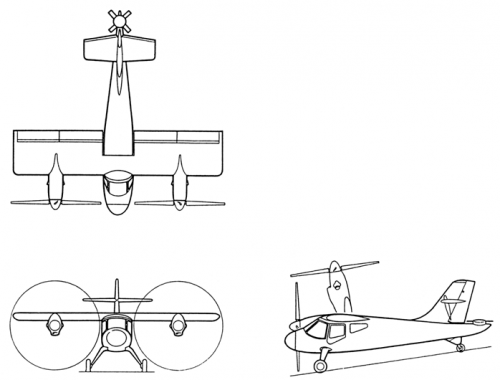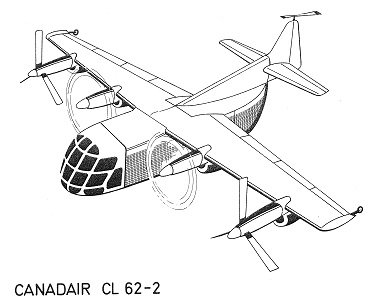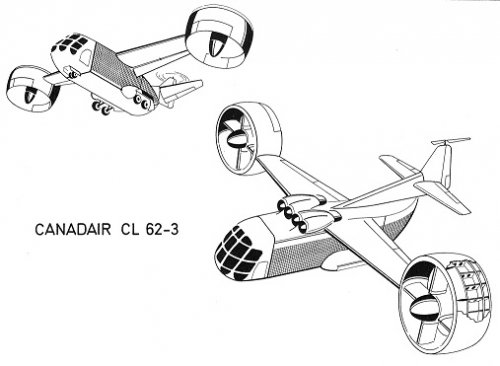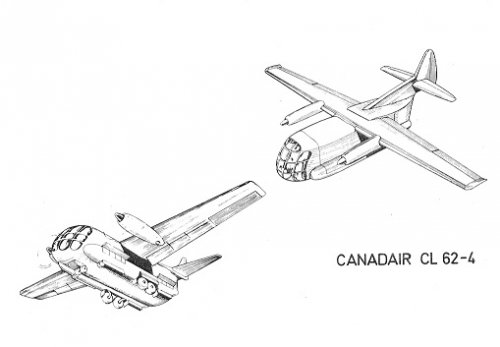CL-72 VTOL Strike Reconnaissance Aircraft
NATO Basic Military Requirement No. 3 (NBMR-3), towards research and development of a V/STOL Supersonic Ground-Strike and Reconnaissance aircraft, was issued from the NATO Ad Hoc Mixed Working Group AC/169 (1960-1966). Canadair had started similar Preliminary Design (PD) proposals of possible short range configurations in mid-1958 to RCAF requirements, which included a basic VTOL ground attack mission, overload STOL mission, low level and high altitude reconnaissance, and the ferrying role. In a tactical role, the VTOL aspects of such a design proposal permitted operations independent from conventional airfields, or where airfields did not exist, and close to front lines, with immunity from enemy attacks by means of launch/recovery base dispersal. The lethal weapon payload designated to be carried was a selection between two 1,000 lb. bombs or a single 2,000 lb. tactical atomic bomb. The aircraft designs allowed for only a single pilot with another crewmember available with the associated launch and landing support equipment. The operational design aspects of such aircraft were examined, and the following configurations were proposed and assigned specific Canadair “PD” numbers.
Horizontal Riser Configurations (PD 7200 and PD 7201)
The basic jet lift CL-72 VTOL strike aircraft was to be 18.2 m (59.6 ft) long, with a wing span of 8.8 m (28.8 ft) providing a total wing area of 37.2 m² (400 ft²). The empty weight of the Horizontal Riser variants was envisioned at 9,251 kg (20,395 lb), with the gross weight peaking at 18,144 kg (40,000 lb). Two basic, but not standard, planform and engine layout designs were considered and some specifications were written. The PD 7200 configuration was seen with a typical rounded fuselage incorporating a conventional shoulder-mounted delta-wing. A delta-shaped horizontal tail arrangement was located on the aft fuselage under a centered characteristic vertical fin. The PD 7201 design was seen as a long narrow delta shape, almost a lifting body-type configuration, with flaperons at the flattened rear surface of the combined fuselage and wing incorporating vertical endplates and rudders positioned fully outboard.
For the PD 7200 and PD 7201 configuration designs, the written specifications had called for four Orenda PS-16 thrust engines and ten Orenda lift engines, all rated at 16.4 kN (3,600 lbf) of thrust. The thrust engines were to provide general propulsion for conventional flight, or also providing double duty as a lift engine, these being fed by a single dorsal intake and exhausting via jet exhaust pipes located under the rear fuselage. The associated drawing for the PD 7200 configuration shows only two such thrust engines, arranged inline and apparently side-by-side, being fed by a single, horizontally bifurcated dorsal intake.
Of the specified ten Orenda PS-16 lift engines that were to provide the jet VTOL lift capability, eight of these are seen housed side-by-side in the forward fuselage area immediately aft of the cockpit, and two others similarly arranged at the rear of the aircraft, bracketing the bomb bay. The less detailed drawing of the PD 7201 configuration depicts a single combined thrust and lift engine with a swiveling jet exhaust pipe under the rear fuselage, although it may be speculated that there could be two such engines arranged side-by-side. There are apparently up to fourteen lift engines seen located at the mid-fuselage area. There does not appear to be any interior space available for the carriage of the bomb load and there is no mention of carrying exterior stores.
Assisted Take-Off Configurations (PD 7202 and PD 7203)
Various modes of achieving vertical launch and recovery were studied for the proposed CL-72 assisted take-off aircraft configurations. These design concepts offered highly mobile systems to be sustained without the need for large ground support facilities. They were to be capable of increased operational flexibility particularly in rough area conditions. One radical and tested approach to the capability of getting military aircraft safely airborne away from enemy targeted areas (namely civilian and military airfields) was developed in the mid-1950s as the mobile Zero-Length Launch (ZELL) technique. Deployed openly or within hardened shelters near likely targets, the aircraft with its load of conventional or nuclear weapons would be virtually catapulted into the air at a moments notice by a solid-fuel rocket thus obviating the need for conventional runways or unprepared strips near the front lines. This launch method was used initially with early large cruise missiles and reconnaissance drone systems, then tested extensively with such familiar manned aircraft as the Republic F-84 Thunderjet, North American F-100 Super Sabre, and the Lockheed F-104 Starfighter. For the proposed ZELL method of getting airborne, the conventional and narrow delta CL-72 strike aircraft, mounted atop a tiltable platform, would have solid-fuel rocket motors attached to a reinforced lower fuselage hardpoint for launch. Following a short burn time to get the aircraft into the air and quickly up to flying speed, the rocket boosters would be jettisoned, the aircraft would complete its mission under its own power, then recover like a conventional, or as a VTOL aircraft at a safe location.
Another method to get the aircraft into the air had a modified CL-72 aircraft suspended, via a nose hook, onto a “clothesline” pickup cable mechanism, on a readily transportable, inverted “T”-shaped, tiltable launch and recovery platform. The platform and attached aircraft would be raised from the horizontal to the vertical position by means of large hydraulic actuators for the launch and recovery operations. As a single seat, multi-jet tail-sitter, this particular design was to be a variant of the long Narrow Delta Wing configuration, with a central vertical stabilizer, squared fuselage side air intakes, and dual jet exhausts at the rear. At the wing tips were small vertical endplates extending above and below, and a single vertical fin was centered aft.
The lower portion of each had a skid plate installed as a buffer against the tiltable platform. The aircraft would be launched vertically, then transition to horizontal flight in order to perform its mission, and finally be retrieved back to the platform in a vertical orientation. This interesting method of operation was similar to that perfected during the Ryan Aeronautical Company X-13 Vertijet flight-test programme of 1955-1958. With this particular CL-72 variant, a dedicated “Land-on Controller” was to be stationed atop the platform to perform launch and retrieval operations in order to alleviate the aircraft pilot from these demanding tasks, especially following a trying mission.
Composite Aircraft Configuration (PD 7204)
Truly the most unique and complex of the CL-72 vertical launch and recovery configurations, was the ingenious VTOL composite aircraft idea. The mission aircraft was to be mounted centrally upon a flat-surfaced, mobile lifting platform that was in itself powered by multiple bypass lift and propulsion engines. This was an idea similar to the English Electric P.17A aircraft spelled out in General Operational Requirement (GOR) 339 (the precursor to the TSR.2) proposal, put forth in collaboration with Short Brothers, who had developed the idea for a P.17D VTO jet-lift platform in 1957. In this proposed design scheme, sixteen Orenda lift and propulsion engines of the Canadair lifting platform were to be vertically mounted in tip pods interconnected by the flat launch and recovery platform, with all engine intake openings located at the top of the pods. The platform’s pilot and a rearward facing “land-on controller” were seen housed in a bulbous cockpit at the forward end of the left pod. The composite aircraft combination sat high atop two fixed and stalky forward undercarriage struts and two rear sets of wheeled gear attached to swept, downward-angled fins. To conserve the mission aircraft’s fuel, the platform would have to be positioned close to the target area prior to launching the aircraft. Following completion of the operation, the mission aircraft was to be recovered back aboard the low flying VTO platform, or alternatively to an available airstrip if necessary. The successful landing and recovery of the mission aircraft back to the platform following a stressful mission would have been somewhat problematic at best.
Not a Canadair product, but remarkably similar to the PD 7201 planform layout was the LeBel experimental VSTOL of December 1962. A singular example, in poor condition, seen by the author in 1993 at the Chino Airport, California, bore the long narrow delta shape of the ‘7201. Its single turbojet engine powered dual sets of wooden propellers mounted on a rotating arm on the center fuselage. The operating propellers would lie flush with the upper fuselage providing VTOL capability via controlled louvers at the bottom of the fuselage. For forward flight, the propellers would be pivoted up and forward to a vertical position. Dual vertical tails were located just inboard of the wingtips. Canada Patent No.654,548 appeared on the nose.

